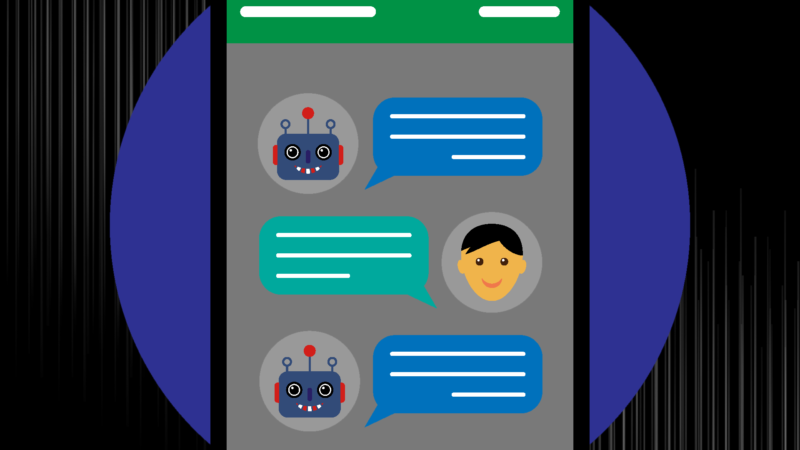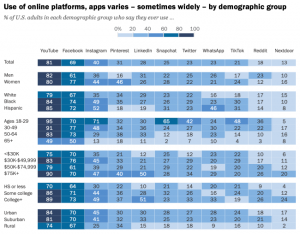Sure, chatbots can cut costs, but columnist Jay Baer says before you jump on the chat bandwagon, you need to make sure you’re putting the customer first.

Artificial intelligence is one of the biggest buzzwords in society, and the business world is making widespread use of a practical application of the technology: chatbots. Bots are rapidly taking over customer service roles, with consumers unable to tell whether they’re communicating with a human or a computer in some cases.
Chatbots deliver results that human customer service representatives cannot. Bots don’t need to eat, sleep or take bathroom breaks, which means they’re available 24 hours a day. Chatbots can detect when customer interactions are going poorly and transfer the call to a human representative, but having a bot on the front lines dramatically decreases the number of calls that people must field.
An army of chatbots is also able to field an infinite number of calls without the need for grating hold music punctuated by occasional reassurances that “your call is important to us.” Because bots are computer programs, they’re able to mine data from interactions with customers and share this data with human representatives. In short, there are numerous reasons chatbots are the hot new thing in customer service.
That said, too many companies are climbing aboard the chatbot bandwagon with the attitude that the technology is tantamount to a comprehensive customer service strategy. In truth, they’re tools that companies can use in their customer outreach. Companies need to think first and foremost about how these tools will improve customer service instead of assuming the bots will take care of it for them.
Priorities across platforms
The increase of live chat and chatbots over the past few years has been remarkable, but in general, the customer experience hasn’t improved much. In fact, I’d argue that customer experiences have actually become worse. When adding a new way for customers to interact with your company, it’s critical to ensure that it’s better than the old methods.
I recently had a problem with a company that I frequently use. I used its website to chat with a customer service agent, but the agent was incredibly slow and didn’t know much about the product. After a half-hour of painful messaging, the agent gave me a phone number I could call. Five minutes into the phone call, I was able to resolve my issue.
Instead of improving customer experience, many companies are merely looking to save money. Customer service representatives fielding phone calls are limited to one at a time, but agents serving customers via a live chat often juggle three to six conversations at once.
With the right programming, chatbots can handle an infinite number of conversations, essentially bringing the cost per interaction as close to zero as possible. While this might bring tears of joy to the average CFO, customers are crying for a completely different reason.
Putting the customer back in customer service
For companies considering chatbot capability, cost savings should be near the bottom of their priority lists. Instead, they should adopt approaches that favor customer needs.
1. Think about chatbots strategically. A chatbot isn’t a strategy; it’s a tool. It doesn’t solve customer service issues better than a telephone or an email address already does. You must be extremely thoughtful about the circumstances in which AI can skim routine customer queries off the top of your inquiry pool.
Beauty retailer Sephora uses Facebook’s Assist to evaluate messages on the social network. Bots serve as the company’s first responders, but the system directs customers to a human if the bot is unable to answer the question in a timely manner. In the future, AI might suggest responses that human representatives can use instead of needing to manually enter the text.
If you’re thinking of a bot as a marketing tool, you’re doing it wrong. A chatbot should be a customer experience and satisfaction tool with a marketing veneer — not the other way around.
2. Commit the resources to go all-in. Companies can get consumers to behave in certain ways by incentivizing preferred behaviors. Our nation’s Founding Fathers didn’t come up with the idea of Cyber Monday — businesses decided to lower prices once a year to incentivize online shopping. The result in 2017 was $6.59 billion in online spending, according to Adobe Insights.
Encouraging customers to transition from phone and email to chatbots requires exceptional customer service experiences in these new media. To create those worthwhile experiences, companies will need to invest time and money in these channels.
According to a Nielsen study commissioned by Facebook, the public is ready for this transition: Fifty-six percent of consumers would rather participate in an online chat with a customer service agent than talk on the phone.
3. Don’t leave customers in the dark. People loathe waiting on hold. It’s the main reason so many people avoid interacting with customer service departments, which explains why consumers appear to be eager to embrace chat and bots.
A survey of over 5,000 consumers by LivePerson reported that 38 percent of respondents had a positive perception of chatbots, far outpacing the 11 percent who viewed them negatively. The other 51 percent were indifferent as long as their issues were resolved. While chat is great in theory, these interactions can end up requiring a longer wait than a phone call. Worse yet, people are tethered to their computers during the lengthy process.
Chats should offer better customer experiences, with tools that keep customers informed throughout the process. The technology must respect consumers’ time in a world where it’s one of the most valuable commodities available.
Instead of viewing chatbots as a way to resolve customer problems, companies are using these technologies to cut costs. This money-first mentality has caused these organizations to implement this cutting-edge technology poorly, not improving the customer experience whatsoever.
Customers might be entertained by new ways of interacting with customer service, but the novelty wears off quickly. Ultimately, they want a better and more efficient way of getting their problems solved.
Opinions expressed in this article are those of the guest author and not necessarily Marketing Land. Staff authors are listed here.
Marketing Land – Internet Marketing News, Strategies & Tips
(78)
Report Post








